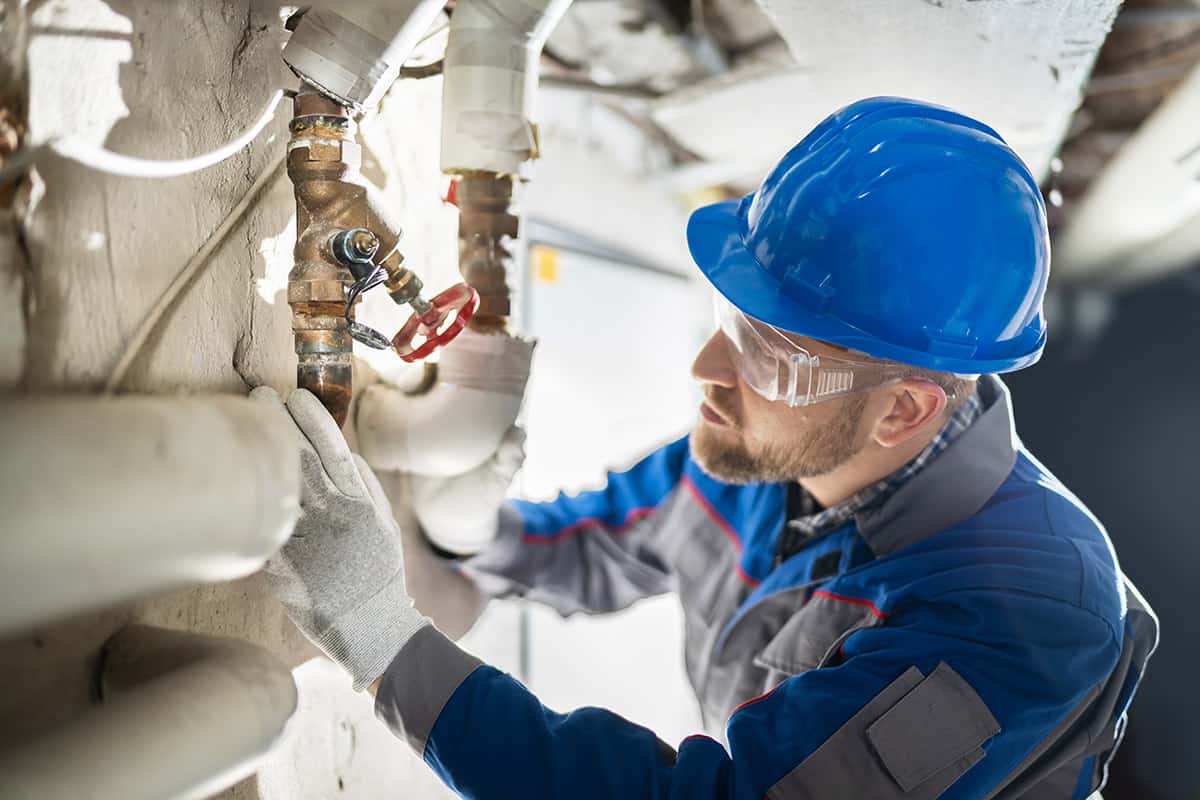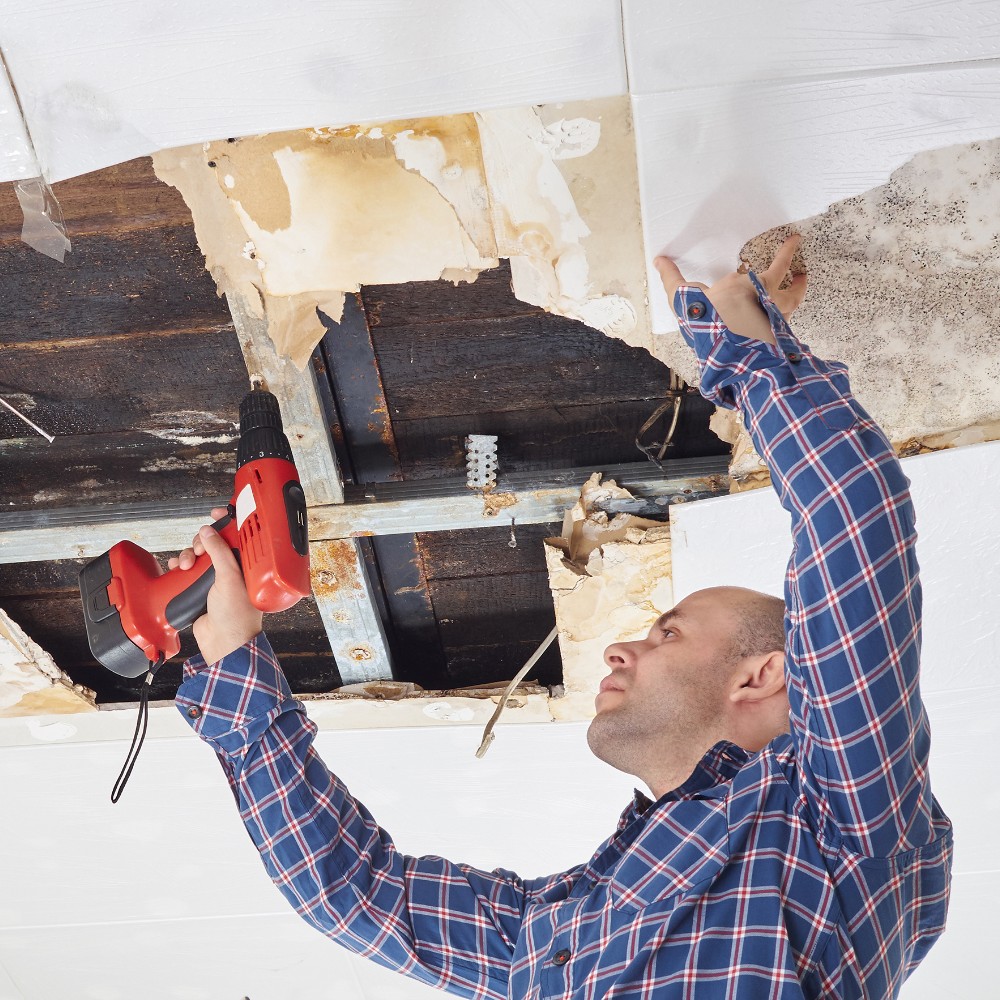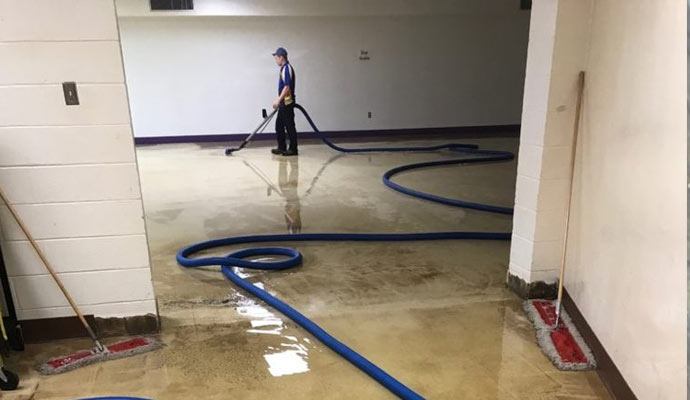Why professional Flood Cleanup Services make a difference after major flooding
Wiki Article
Water Damage Restoration 101: Understanding the Process and Expense
Water damage can strike all of a sudden, leaving homeowners in a state of confusion. Understanding the repair procedure is essential for effective recovery. From reviewing the damage to picking the right provider, each action affects the general result and expense. Aspects such as the kind of water damage and necessity additionally play a considerable function. What are the particular techniques used in restoration, and how can one prepare for potential expenses?Kinds Of Water Damage
Water damage can occur from different sources, each providing distinct difficulties for remediation. The three primary sorts of water damage are classified based upon contamination levels: tidy water, gray water, and black water. Clean water originates from sources like damaged pipes or rainwater, positioning very little health and wellness dangers. Gray water, which includes wastewater from sinks or washing machines, has impurities that may cause pain or ailment if ingested. Black water, the most unsafe group, comes from sewer or floodwaters, having unsafe bacteria and microorganisms. Each type requires particular restoration techniques and precaution to efficiently resolve the damage and minimize wellness dangers. Understanding these differences is vital for professionals and house owners included in the water damage reconstruction process.First Evaluation and Examination
An extensive initial analysis and inspection are important actions in the water damage reconstruction process. This stage starts with a specialist evaluating the extent of the damage, identifying the source of the water invasion, and figuring out the kind of water involved - Water Damage Restoration. Professionals make use of customized equipment to determine wetness degrees in numerous products, such as wall surfaces, floorings, and furnishings. Additionally, they assess structural integrity and potential carcinogen, including mold and mildew growth. The findings from this inspection inform the restoration plan, leading essential activities and source allowance. Precise documents of the damage is essential for insurance coverage cases and future reference. Overall, this first evaluation prepares for efficient repair, making certain a thorough action to the particular scenario handy

Water Extraction Techniques
Adhering to the preliminary analysis, effective water extraction techniques are utilized to minimize damage and prevent more problems. These techniques entail making use of specific tools such as completely submersible pumps and industrial-grade vacuums. The choice of method relies on the volume of water existing and the kind of products influenced. For standing water, submersible pumps are usually used for quick elimination, while vacuums are perfect for extracting water from carpetings and furniture. Furthermore, advanced approaches like water extraction floor coverings may be employed for hard-to-reach locations. The goal is to eliminate as much water as feasible, lessening the potential for mold development and structural damage. Motivate and efficient water removal is crucial in the overall water damage reconstruction process.Drying Out and Dehumidification Process
Once the water extraction is full, the drying and dehumidification process ends up being important to restoring the afflicted location. This stage usually uses industrial-grade dehumidifiers and air movers to efficiently lower moisture degrees. The dehumidifiers attract wet air, getting rid of excess humidity, while air moving companies circulate air to increase dissipation. Tracking tools is frequently used to track humidity and temperature levels, making certain perfect drying conditions. The period of this procedure can differ relying on the extent of the water damage and environmental elements. It is important to extensively dry all affected materials, including walls, flooring, and furnishings, to stop mold growth and structural damage. Proper execution of this step is crucial for a successful remediation result.Cleaning Up and Sterilizing Afflicted Areas

Initial Assessment and Inspection
Before starting any kind of repair initiatives, a detailed preliminary analysis and assessment of the affected locations are vital for reliable cleansing and disinfecting. This procedure involves recognizing the extent of water damage, establishing the source of the water breach, and examining the products impacted. Assessors usually try to find signs of mold development, structural stability concerns, and damaged personal belongings. The assessment likewise consists of checking wetness degrees using specific tools to guarantee no covert water pockets stay, as these can bring about further issues. Recording the findings is necessary for planning the following action in the remediation procedure. A comprehensive first assessment allows repair specialists to devise a targeted method for reliable cleansing and disinfecting, ultimately reducing damage and health dangers.Cleaning Up Methods and Products
Efficient cleansing and disinfecting of water-damaged locations require a variety of products and techniques tailored to the specific materials affected. For porous surface areas like drywall and carpets, removal techniques are vital to eliminate excess dampness, complied with by deep cleaning with specialized detergents. Non-porous products such as ceramic tile or metal can be cleaned up utilizing commercial-grade cleaners that efficiently eliminate impurities. Vapor cleansing is one more efficient method, especially for rugs and upholstery, as it uses high temperature levels to get rid of germs and mold. Furthermore, eco-friendly products are increasingly prominent for their safety and effectiveness. Eventually, picking the suitable cleansing techniques and products not only ensures instant sanitation however additionally help in protecting against more damage and health threats connected with water intrusion.Sanitization and Disinfection Approaches
When attending to water damage, proper sanitization and sanitation approaches are crucial to ensure the safety and wellness of the affected setting. After initial cleansing, surfaces need to be treated with suitable anti-bacterials to get rid of virus, mold and mildew, and germs that grow in damp problems. Common methods consist of making use of EPA-approved chemical disinfectants, which can be used with spraying or cleaning methods. Additionally, ultraviolet (UV) light systems can effectively disinfect areas by neutralizing microbes without extreme chemicals. The choice of approach typically depends upon the kind of materials impacted and the degree of contamination. Inevitably, detailed sanitization not only brings back a risk-free space but likewise assists protect against future health dangers connected with sticking around moisture and mold growth.
Repair Services and Restoration Options

Factors Influencing Restoration Costs
The extent of water damage directly influences the remediation costs property owners can expect to sustain. Factors such as the source of the water, the period of direct exposure, and the afflicted products significantly affect rates. For instance, tidy water damage from a busted try this pipe is usually much less costly to bring back contrasted to damage brought on by sewage. Furthermore, the level of contamination dictates the need for specialized cleaning and disposal services, additionally increasing expenses. Geographical place also plays a duty, as local labor rates and schedule of reconstruction services can differ. The seriousness of the response affects costs; quicker interventions typically lead to lower overall expenditures by protecting against more damage. Recognizing these variables is essential for home owners when approximating repair expensesThe three key types of water damage are categorized based on contamination degrees: tidy water, gray water, and black water. A complete preliminary evaluation and inspection are vital actions in the water damage repair process. For standing water, submersible pumps are typically made use of for fast removal, while vacuum cleaners are suitable for removing water from carpetings and upholstery. The extent of water damage directly affects the repair costs home owners can expect to incur. Tidy water damage from a broken pipeline is normally less pricey to restore contrasted to damage triggered by sewer.
Report this wiki page